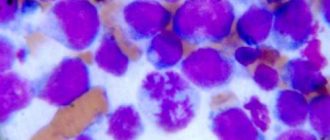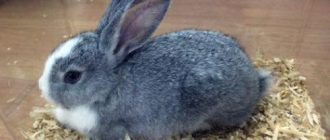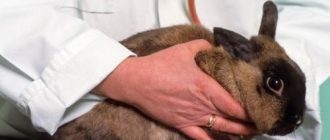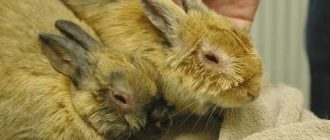The main diseases of domestic rabbits are runny nose, internal and external parasites, uterine diseases (infections and cancer) and joint pain.
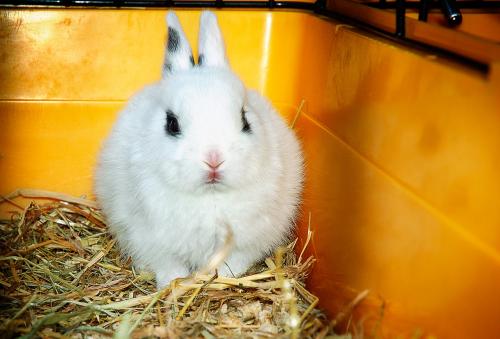
What are the symptoms of these diseases?
Contents
Sniffling or runny nose are symptoms of an upper respiratory infection pathways usually caused by pasteurella multocida (although there are several other bacteria that can cause this infection). Symptoms of infection can be recognized by the eyes. be mucous or purulent discharge, redness, squinting, or on the nose and sinuses – sneezing, mucous membranes or purulent discharge. Eyes and nose often suffer at the same time. Solid, tangled fur can be seen on the inside of the front legs. Pasteurella multocida can infect other parts of the body. it there may be ear infections (with tilting the head), abscesses and uterine infections. Sudden death from sepsis is also possible. (blood poisoning), which is very rare, but may to happen.
Rabbits can become infected with various intestinal parasites. (coccidia and pinworms are the most common), as well as external parasites, such as fur mites, fleas, and sometimes ticks. regular examinations, including microscopic analysis of feces (at least one once a year) will make it easy to diagnose and prescribe treatment.
Rabbit’s teeth grow constantly, but daily chewing of food and tree helps them slow down their growth rate. Regular chewing allows you to keep your rabbit’s teeth in good condition and necessary lengths. Sometimes, after an injury or illness, the growth rate may increase and the teeth become too big. Both can grow molars and incisors, but incisors heal more often. Overgrown Rabbits can stop eating and start drooling. You can easily detect this problem if you look at the mouth of a rabbit. Veterinarians who are familiar with rabbit teeth will evaluate molars, which are located further in the mouth.
Like dogs and cats, rabbits need to be sterilized in a young age (4-6 months). In non-sterilized dogs and cats, often malignant breast tumors develop, but not sterilized rabbits can die from fatal anemia, and they can also develop uterine cancer. This type of cancer is called uterine adenocarcinoma and is characteristic of aging full rabbits. The diagnosis is usually made after tests or operations.
Pain in the supporting joint, or subdermatitis – enough common disease in rabbits. Essentially a disease rabbit ankles. When he sits, his ankles are large part time in contact with the floor. Often suffer from this disease. rabbits in wire cages when rods cage roughly a protective layer of fur on the ankles and injure his joints. These injuries can be prevented simply by installing a quality and even floor in the cage, or at least in the form of flooring towels.
How can I find out that my rabbit is sick?
Some signs of disease in rabbits are difficult to attribute to a disease of a certain type. Most often it is vague and unusual symptoms such as anorexia (lack of appetite) and lethargy, which is observed in many diseases, including diseases of the uterus, kidneys or liver.
You should be worried if you notice any deviations. from the norm, and should be shown to the veterinarian as soon as possible. If the rabbit skips even one feeding, this is a serious reason for anxiety, which should be promptly analyzed.
How are diseases treated in a rabbit?
In most cases, a runny nose is mild and if you start timely treatment, it can be easily cured. However if his not treated, the bacterium can become aggressive, and the disease go chronic and potentially fatal. Treatment usually includes oral or injectable antibiotics, and lasts at least 2-4 weeks. In some cases, treatment may last up to several months, depending on the response to treatment. Some antibiotics, especially penicillin and similar drugs, may be fatal for rabbits. There are some good oral and injectable antibiotics used for rabbits. May also eye and nasal drops should be used, but be sure to safe combination with other antibiotics.
All rabbits carry Pasteurella bacteria (pasteurellosis), but only in some it develops into a disease (The rabbit’s immune system usually keeps the bacterium safe). Stress, unhealthy diet, a new diet, the emergence of new pets, overpopulation, pollution, immunosuppression – all it can cause a disease. Many rabbits remain chronically infected. The disease is often transmitted through close contact between rabbits, but remember, not all of them are prone to it. Ideally, new rabbits should be isolated for some time (one month is enough). Litter should be cleaned regularly to prevent the accumulation of ammonia from urine, which can irritate eyes and nose. Relapses may also occur if your rabbit subject to stressful situations. To keep the rabbit healthy, it is especially important to minimize his problems with pasteurellosis.
External and internal parasites are usually treated quite easily. Your veterinarian should prescribe the right medicine for you. depending on the results of the examination and supporting tests. Oral (for oral administration) medications are usually prescribed when internal parasites. Oral preparations, creams, shampoos can be necessary for the treatment of external parasites. There is also a tick, called Cheyletiella (heyletiellosis), which is treated very difficult.
Rabbit overgrown teeth are usually treated by grinding, which carried out, as a rule, under general anesthesia. This grinding is often have to be repeated at regular intervals, because the teeth rabbits grow throughout his life. Tooth circumcision with using wire cutters is no longer practiced today because of the danger fracture of the incisors, resulting in severe pain and likelihood of infection.
Uterine adenocarcinoma is usually treated surgically. As the cost of the procedure is high when the rabbit is already sick (rabbit with cancer uterus, may require intensive care and hospitalization) It is recommended to sterilize rabbits in advance. Uterine infections in addition to antibiotics may also require sterilization.
Joint treatment can be long and difficult, especially on late stages of the disease. Treatment will require antibacterial drugs and flushing wounds. You will also need a soft lining on floor. If you started treatment at an early stage, then the disease can cure without much effort. But, nevertheless, the disease can develop into a chronic, severe and deep infection.

